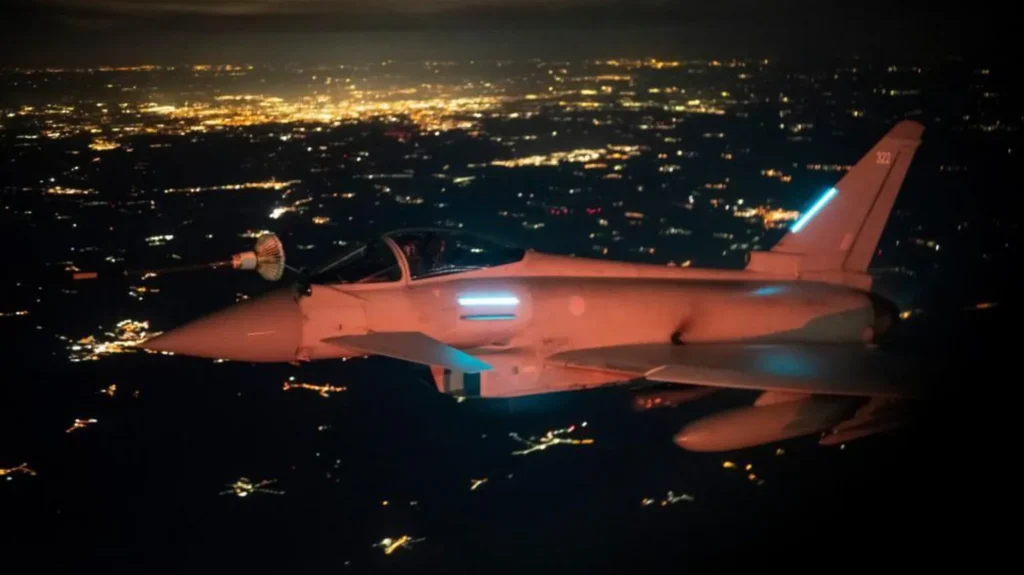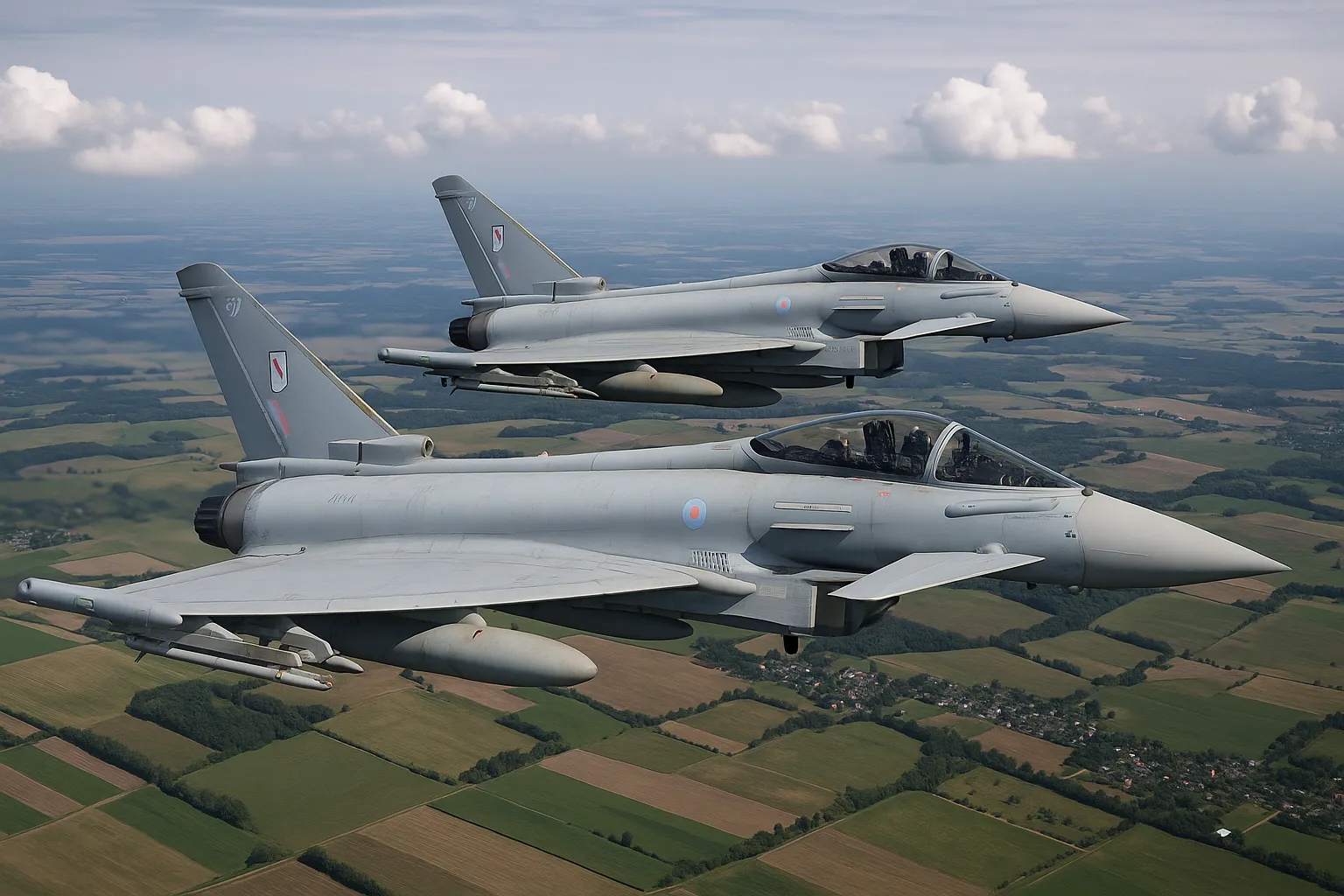The RAF jets Poland mission is more than a routine patrol. It is a stark reminder that Nato’s airspace is under direct pressure, and Russia is testing the alliance’s cohesion. The British Typhoons scrambled over Poland are not just interceptors; they are political statements in the sky. The official line is deterrence, but the reality is exposure: Nato is stretched thin, fragile, and reactive.
Context: Nato’s Eastern Sentry response
On 10 September, Nato activated “Eastern Sentry” after 19 Russian drones penetrated Polish airspace. Poland shot down three, but the incursion marked the most dangerous escalation since Russia’s full-scale invasion of Ukraine in 2022. The UK confirmed its role days later, with two Typhoons and a Voyager tanker sent from RAF Coningsby. Britain’s Defence Secretary hailed the move as a clear signal that “Nato airspace will be defended.”
Romania also reported a drone breach, while Estonia claimed Russian warplanes violated its skies for twelve minutes. Moscow denies deliberate aggression, framing these as “accidents.” Yet Poland’s Prime Minister warned bluntly: “This is the closest we have been to open conflict since World War Two.”
Oppositional Argument: Illusion of deterrence
Mainstream media painted the RAF jets Poland mission as reassurance. In reality, it exposes Nato’s reactive posture. If 19 drones can force an alliance-wide scramble, what happens when Russia tests the skies with missiles or hypersonics? The alliance cannot continue to confuse symbolism with strategy. Air patrols may send signals, but they don’t close the glaring gaps in Europe’s air defence.
This fragility is worsened by political disunity. Some allies hesitate to confront Russia head-on, preferring cautious language over decisive action. Britain may celebrate its flights, but the larger picture is grim: deterrence is performative, not preventative.
Analytical Breakdown: Escalation by design
Russia knows precisely what it is doing. By sending drones into Poland and Romania, and warplanes into Estonia, Moscow tests Article 4 of Nato’s treaty—the clause that allows consultations when members feel threatened. These aren’t random violations. They are calibration exercises to probe Nato’s tolerance, split opinion among allies, and force repeated, exhausting mobilisations.
History offers parallels. During the Cold War, Soviet bombers regularly skirted Nato airspace, but the difference today is the technology: drones are cheaper, faster to deploy, and harder to intercept consistently. Russia’s aim is attrition—of patience, budgets, and political will. Every scramble burns fuel, resources, and resolve.

Human Perspective: The frontline tension in Poland
For Poles living near the eastern border, the RAF jets Poland mission is not abstract theatre—it is a reminder of vulnerability. Towns close to the frontier have endured air raid alerts since 2022. Farmers report drones crashing into fields, and civilians fear escalation after the government admitted this was the most serious violation since World War Two.
Eighty-five years ago, Polish pilots defended Britain in the Battle of Britain. Today, British pilots fly over Poland. This symmetry is poetic, but for ordinary citizens it underscores a bitter truth: Poland remains the buffer zone where Nato’s resolve will be tested first.
Counterarguments
Some argue these air patrols demonstrate unity and reassure allies. But reassurance without resilience is a hollow promise. Critics warn that overreaction risks escalation. Yet ignoring repeated incursions invites even greater risk—normalising Russian violations until they become routine. The real question is not whether to respond, but how to build credible air defences beyond symbolic flights.
Conclusion: A warning, not a victory
The RAF jets Poland mission is a warning shot, not a triumph. Nato must stop mistaking gestures for guarantees. Russian drones have already breached allied skies, and Moscow will escalate further. Without serious investment in integrated air defence and political unity, Eastern Europe will remain exposed. Deterrence cannot be flown in circles—it must be built on strategy, not symbolism.
